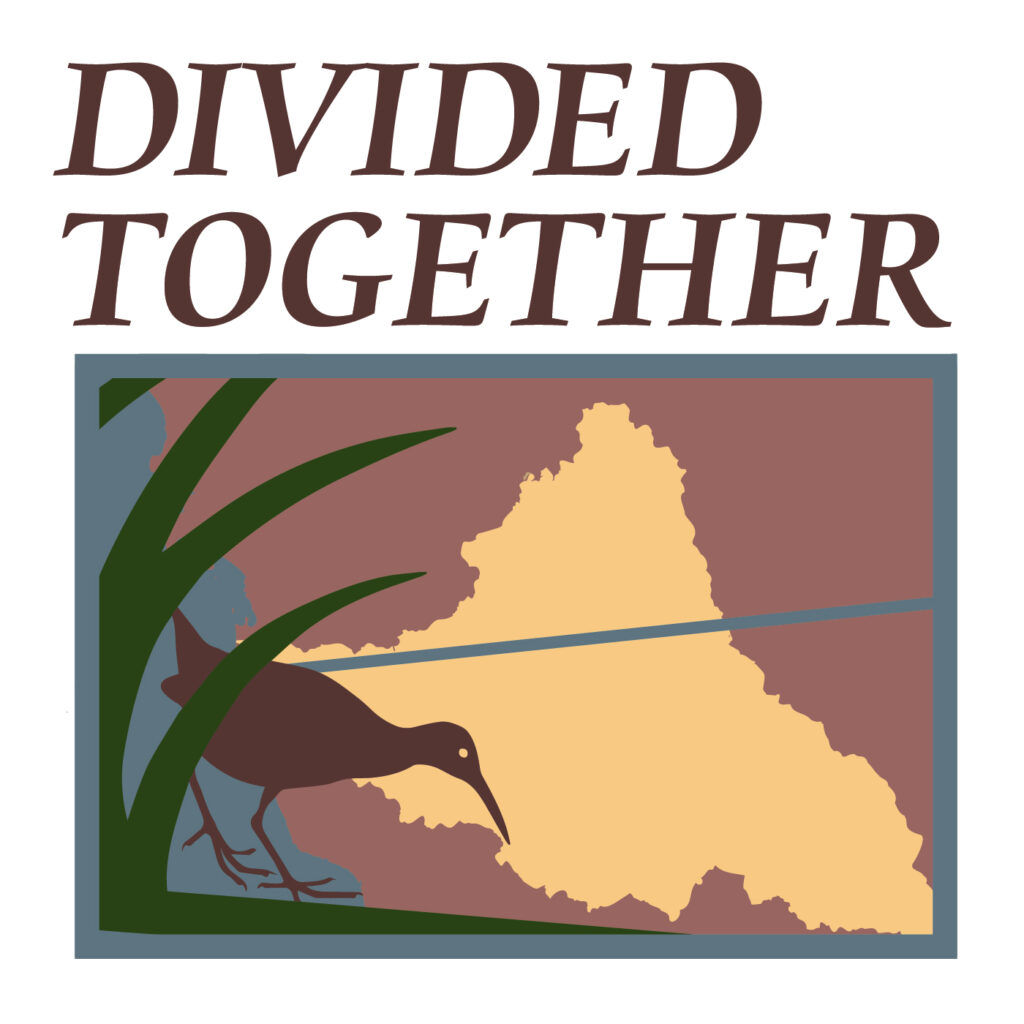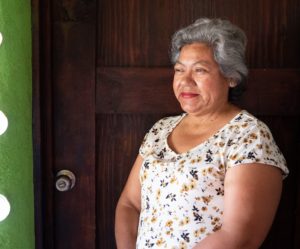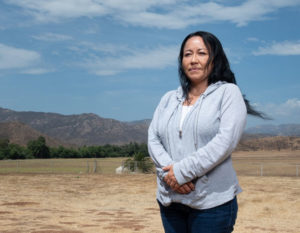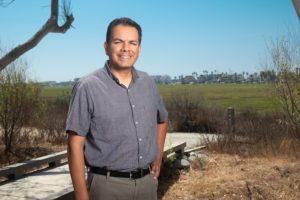The Divided Together podcast was created to help visitors explore Border Field State Park and learn about it’s origins. Each episode showcases the park through a unique perspective that ties the land to its people.
Season 2
Divided Together Season 2 Episode 2: A Tale of Two Livelihoods
Listen here
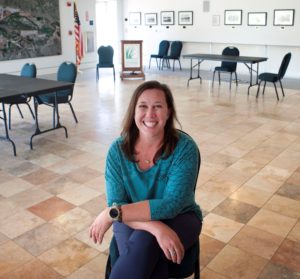
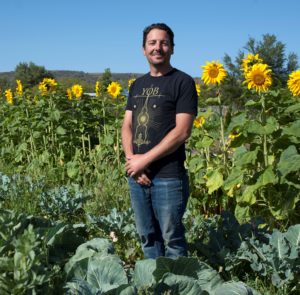
Photos (left to right): Dr. Kristen Goodrich, TRNERR Coastal Training Program Coordinator; Gregg Cady, Farm Director of Wild Willow Farm; Adela Bonilla Armenta, Upcycling Craftsperson, Los Laureles canyon
Photo credit: David Maug
This is the ancestral land of the First People, the Kumeyaay.
Nature’s benefits, or the goods and services vital to human health and livelihoods, are also called ecosystem services. While there are several categories of ecosystem services, of focus today, and increasingly within the National Estuarine Research Reserve System, is the category of cultural ecosystem services. These are the non-material benefits that result from paired human and environmental interactions and include stewardship, aesthetics, recreation, and education. For places with strong indigenous and local community presence, these encompass environmental conditions that allow for spiritual experiences, cultural heritage, sense of place, and way of life.
In this episode of Divided Together, we’ll hear from Dr. Kristen Goodrich on her perspective about the Tijuana Estuary’s ecosystem services. We’ll also hear from Adela Bonilla Armenta, who works in a collective in Los Laureles, Tijuana Mexico that focuses on upcycling waste to make beautiful and functional products, and Gregg Cady in the Tijuana River Valley in San Diego who is involved in farm education. We will examine reciprocal relationship with place and hear the stories of two people in a bioregion, with livelihoods that are influenced by their being situated in the Tijuana River Watershed yet on different sides of the U.S.-Mexico border.
Divided Together is a California State Parks podcast series for Border Field State Park, brought to you by Parks California and the generosity of an anonymous donor.
Adam Greenfield is the engineer and co-producer of this podcast. Victoria Chavez contributed voiceover for Adela Bonilla. Anne Marie Tipton is the host and co-producer.
Episode Transcript: English
Episode Transcript: Spanish
Divided Together Season 2 Episode 1: Line in the Sand
Listen here
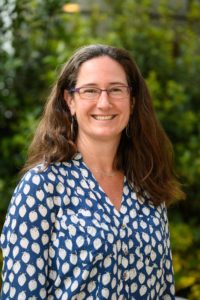
Photo credit: Jamie Pham
This is the ancestral land of the First People, the Kumeyaay.
For thousands of years, fresh water flowed down from mountains to the east, carving out a course and, with its sediments, creating the Tijuana River Estuary when it mixed with the waters of the sea. All that time, plants and animals adapted to the evolving environment, with Kumeyaay using the estuary and its surrounding land for food-gathering and habitation. With the arrival of Spanish colonists and soldiers in May of 1769, all those patterns began to change and the natural landscape was subject to a different idea of ownership and land management. This shift was cemented when in 1821, the Tijuana Estuary became part of Alta California. In 1848, the Treaty of Guadalupe Hidalgo ended the U.S.-Mexican War – and ceded present-day California to the United States, eventually solidifying borders that changed people’s ways of life.
You might have heard the war between the United States and Mexico referred to as the Mexican American War. We prefer to use the term U.S. -Mexican War because it acknowledges that Mexico is also a part of America, as well as the hard feelings that still exist to our neighbor to the south regarding that war.
In this episode of Divided Together, we’ll hear from Rachel St. John, an historian who wrote a book about the early U.S.-Mexico border period from 1848 to the 1930s. How did a simple line on a map transform into the regulated divide we have today? In this episode historian Rachel St. John shares how an array of officials, land pirates, and law enforcement created the foundations for the modern border control we have today.
Divided Together is a California State Parks podcast series for Border Field State Park, brought to you by Parks California and the generosity of an anonymous donor.
Adam Greenfield is the engineer and co-producer of this podcast. Anne Marie Tipton is the host and co-producer.
Episode Transcript: English
Episode Transcript: Spanish
Season 1
Episode 1: Kumeyaay Nation Divided by the Border
Listen here
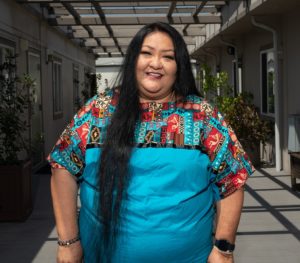
Photo credit: Gustavo Mayoral
This is the ancestral land of the First People, the Kumeyaay.
When the border between the United States and Mexico was established in the 1850s, the land of the Kumeyaay was split between the new American state of California and northern Mexico. People and culture were immediately divided. In the over 170 years since, the effects on the culture and land management have become evident.
In this first episode of Divided Together, we’ll hear from a respected member of the Kumeyaay Nation, Ana Gloria “Martha” Rodriguez. For nearly 20 years, Martha and her family have been important stakeholders for California State Parks in San Diego County, often sharing cultural knowledge and providing invaluable feedback on proposed projects. She and her husband, Dr. Stanley Rodriguez, participated in our Fiesta del Rio event for ten years. They both run the Kosay Kumeyaay Market in Old Town San Diego State Historic Park. We’ll hear how this border has had an impact on the people and the land over the centuries, and we’ll hear what Martha is doing to help prevent further erosion and maintain the Kumeyaay way of life and spirit.
Divided Together is a California State Parks podcast series for Border Field State Park, brought to you by California State Parks Foundation, Parks California, and the generosity of an anonymous donor.
Music Credits:
- Lobo Lobo by Blue Dot Sessions is licensed under an Attribution-NonCommercial 4.0 International License. (https://creativecommons.org/licenses/by-nc/4.0/, transformed for time)
- An Oddly Formal Dance by Blue Dot Sessions is licensed under an Attribution-NonCommercial License. (https://creativecommons.org/licenses/by-nc/4.0/, transformed for time)
- Lakeside Path by Blue Dot Sessions is licensed under an Attribution-NonCommercial License. (https://creativecommons.org/licenses/by-nc/4.0/)
- Lo Margin by Blue Dot Sessions is licensed under an Attribution-NonCommercial 4.0 International License. (https://creativecommons.org/licenses/by-nc/4.0/)
Episode Transcript: English
Episode Transcript: Spanish
Episode 2: Scientists and Geographers Working Across Borders
Listen here

This is the ancestral land of the First People, the Kumeyaay.
In 1982, the Tijuana River National Estuarine Research Reserve was established. Its goal was, and still is, to enhance scientific collaboration and research within the watershed that is split between two countries, Mexico and the United States. Three quarters of this massive water basin lies in Mexico, making this collaboration even more necessary and important.
Over time, various research partnerships were created to study erosion, sedimentation, and tropicalization. More recently, geography professors have studied erosion and sedimentation in Los Laureles Canyon in Tijuana, a sub-watershed that flows right into Border Field State Park. When it comes to the ocean, tropicalization is another significant collaboration topic.
In this episode we’ll hear from some of the geographers and scientists working back and forth across the border, some of the challenges and rewards they’ve encountered, and ways to make studying this landscape and marine environment more accessible.
Divided Together is a California State Parks podcast series for Border Field State Park, brought to you by California State Parks Foundation, Parks California, and the generosity of an anonymous donor.
Music Credits:
- Lobo Lobo by Blue Dot Sessions is licensed under a Attribution-NonCommercial 4.0 International License. (https://creativecommons.org/licenses/by-nc/4.0/, transformed for time)
- Slapstick by Blue Dot Sessions is licensed under a Attribution-NonCommercial 4.0 International License. (https://creativecommons.org/licenses/by-nc/4.0/)
- Dead River by Blue Dot Sessions is licensed under a Attribution-NonCommercial 4.0 International License. (https://creativecommons.org/licenses/by-nc/4.0/)
- Flatlands 3rd by Blue Dot Sessions is licensed under a Attribution-NonCommercial 4.0 International License. (https://creativecommons.org/licenses/by-nc/4.0/)
- Kirkus Interlude by Blue Dot Sessions is licensed under a Attribution-NonCommercial License. (https://creativecommons.org/licenses/by-nc/4.0/, transformed for time)
- Cornicob by Blue Dot Sessions is licensed under a Attribution-NonCommercial 4.0 International License. (https://creativecommons.org/licenses/by-nc/4.0/, transformed for time)
- Hardsider by Blue Dot Sessions is licensed under a Attribution-NonCommercial 4.0 International License. (https://creativecommons.org/licenses/by-nc/4.0/, transformed for time)
Episode Transcript: English
Episode Transcript: Spanish
Episode 3: Indigenous Land Use Practices
Listen here
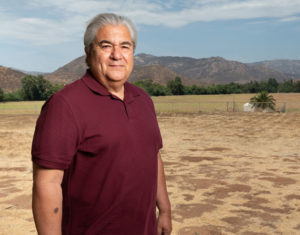
Photos: Kristie Orosco, San Pasqual Band of Diegueno Mission Indians; Mike Connolly, Campo Band of Diegueno Mission Indians
Photo Credit: Gustavo Mayoral
This is the ancestral land of the First People, the Kumeyaay.
As climate change continues to wreak more havoc both locally and abroad, how we manage land will become more of a significant factor in protecting the planet’s resources. However, here in California, we don’t have to look far to find ways to accomplish that.
For thousands of years, the Kumeyaay have implemented land management practices to both protect and enhance resources and productivity of the land, whether it’s for food or medicine or other raw materials. To this day, some of those traditional practices are still in use. This ranges anywhere from building rock walls to utilizing controlled burns.
In this episode of Divided Together, we’ll hear from two members of the Kumeyaay Nation and how their ancestors have used the land’s resources to benefit both the land and the people, as well as why these practices are necessary in our increasingly changing climate.
This episode closes with a special twenty-seven-year-old recording of the late San Jose de la Zorra elder, Gloria Castaneda, describing the juncus collecting song. Audio courtesy her daughter, Ana Gloria Rodriguez.
Divided Together is a California State Parks podcast series for Border Field State Park, brought to you by California State Parks Foundation, Parks California, and the generosity of an anonymous donor.
Music Credits:
- Lobo Lobo by Blue Dot Sessions is licensed under a Attribution-NonCommercial 4.0 International License. (https://creativecommons.org/licenses/by-nc/4.0/, transformed for time)
- Hickory Interlude by Blue Dot Sessions is licensed under a Attribution-NonCommercial License. (https://creativecommons.org/licenses/by-nc/4.0/)
- The Dean by Blue Dot Sessions is licensed under a Attribution-NonCommercial 4.0 International License. (https://creativecommons.org/licenses/by-nc/4.0/)
- Selena Leica by Blue Dot Sessions is licensed under a Attribution-NonCommercial 4.0 International License. (https://creativecommons.org/licenses/by-nc/4.0/)
- Allie Mine by Blue Dot Sessions is licensed under a Attribution-NonCommercial 4.0 International License. (https://creativecommons.org/licenses/by-nc/4.0/, transformed for time)
- Juncus collecting song by Gloria Castaneda, San Jose de la Zorra Kumeyaay. Courtesy Ana Gloria Rodriguez.
Episode Transcript: English
Episode Transcript: Spanish
Episode 4: Human Rights Along the Border
Listen here
Photo: Pedro Rios Director of the U.S. Border Program of the American Friends Service Committee. Photo credit: Gustavo Mayoral
This is the ancestral land of the First People, the Kumeyaay.
In 1917 during World War I, there was concern among Quakers- a largely religious group of people – to find ways to serve without joining the military or taking lives.
The American Friends Service Committee quickly established itself as an organization for humanitarian relief and social change. They were also in direct contact with the U.S. military discussing how to move forward with conscientious or religious objectors to war. This was in direct response to the military’s inconsistency in dealing with religious objectors during previous periods of conflict.
Over time, the American Friends Service Committee’s reputation grew. In 1947, they were awarded the Nobel Peace Prize and since then have worked with groups from all backgrounds and cultures around the world to promote a world free of violence, inequality, and oppression. Here in the Southern California border region, this work largely focuses on immigration and humanitarian concerns.
In this episode we’ll hear how the American Friends Service Committee has had an impact on the border region and the lives of those involved in the work they do.
Divided Together is a California State Parks podcast series for Border Field State Park, brought to you by California State Parks Foundation, Parks California, and the generosity of an anonymous donor.
Music Credits:
- Lobo Lobo by Blue Dot Sessions is licensed under a Attribution-NonCommercial 4.0 International License. (https://creativecommons.org/licenses/by-nc/4.0/, transformed for time)
- Lanky by Blue Dot Sessions is licensed under a Attribution-NonCommercial License. (https://creativecommons.org/licenses/by-nc/4.0/, transformed for time)
- Vegimaine by Blue Dot Sessions is licensed under a Attribution-NonCommercial 4.0 International License. (https://creativecommons.org/licenses/by-nc/4.0/, transformed for time)
- Jog to the Water by Blue Dot Sessions is licensed under a Attribution-NonCommercial License. (https://creativecommons.org/licenses/by-nc/4.0/, transformed for time)

